Churchill Downs
Introduction
Text-to-speech Audio
Images
The Churchill Downs racetrack in Louisville, Kentucky is home to the world famous Kentucky Derby (image from Churchill Downs).
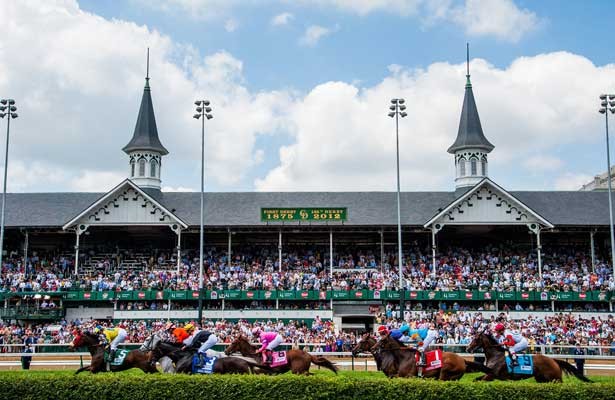
A race at the Downs (image from Churchill Downs)
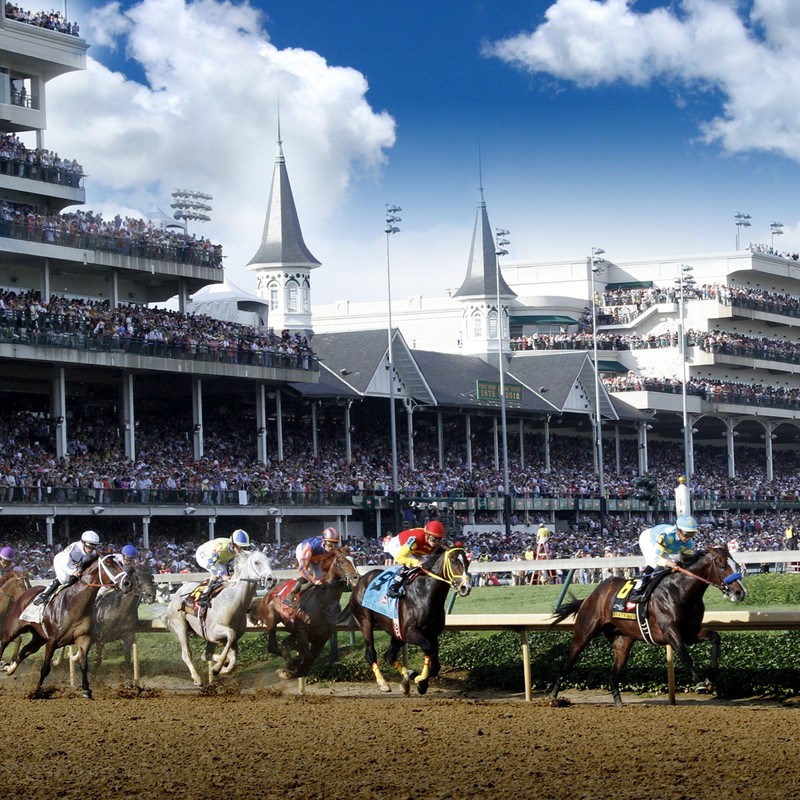
Statue dedicated to Barbaro outside the Kentucky Derby Museum (image from Panaramio)
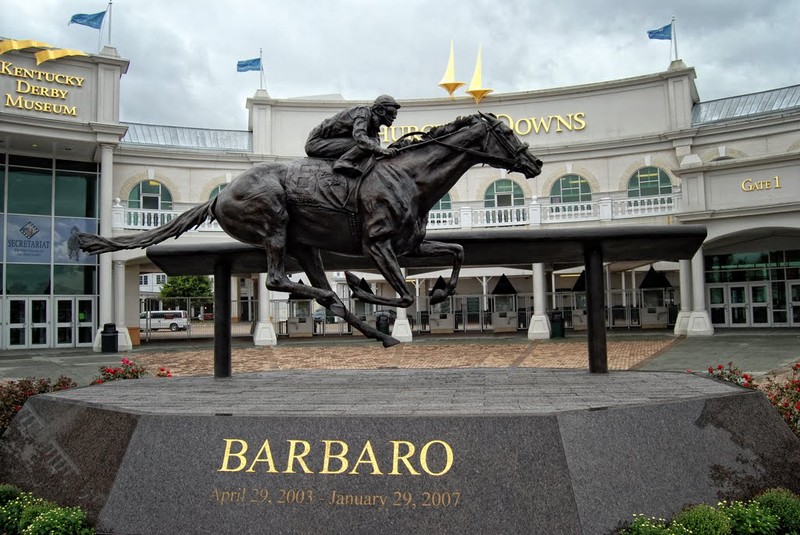
The 1895 Grandstand with twin spires (image from the Courier-Journal)
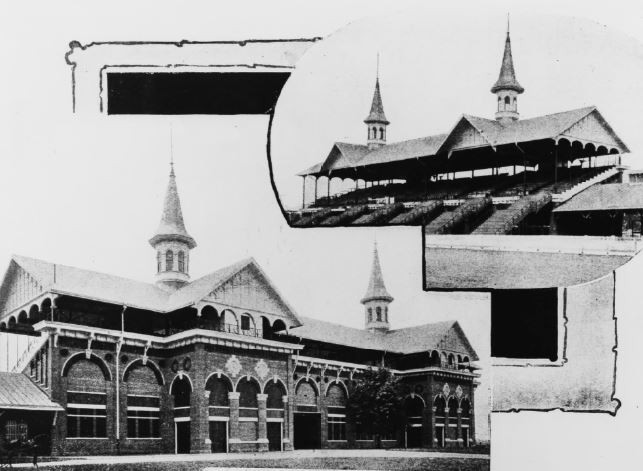
The original 1875 Grandstand (image from the Courier-Journal)
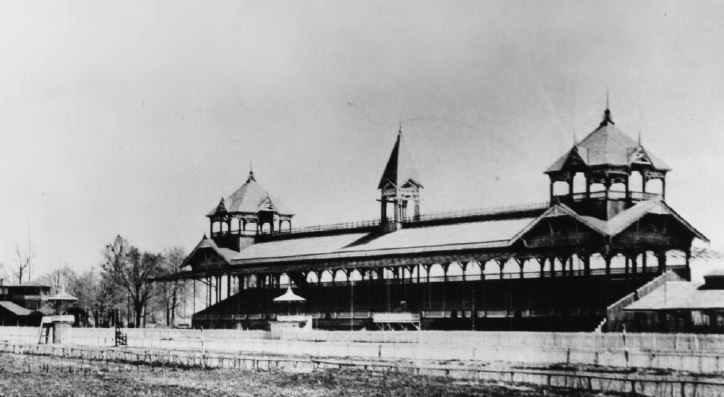
The original 1875 Louisville Jockey Clubhouse (image from the Courier-Journal)
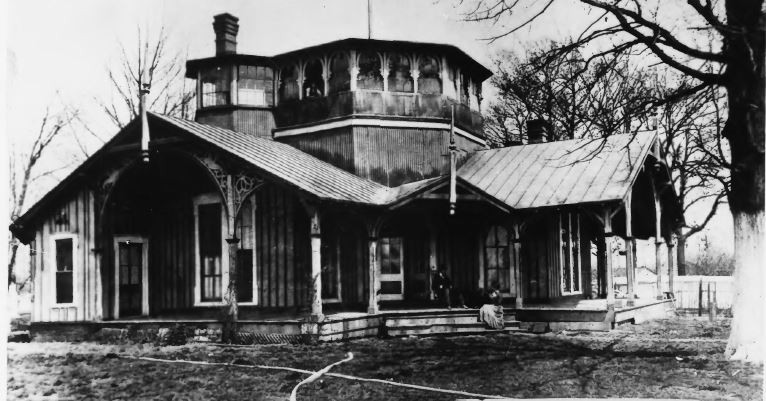
Louisville's champion boxer, Muhammad Ali, at Churchill Downs in 1962 (image from Pinterest)

Backstory and Context
Text-to-speech Audio
Today's Churchill Downs is a 146-acre facility including the one-mile track and Bluegrass turf course, grandstand and clubhouse, formal gardens, restaurant and banquet hall, and the two-floor Kentucky Derby Museum. The track holds the record for the longest-running continuous sporting event in the nation, with the first Kentucky Oaks, Derby, and Clark Handicap races taking place in 1875. The Kentucky Derby, also known as the Run for the Roses, has drawn as many as 170,000 people at a time to the National Register of Historic Places listed Churchill Downs. With the 1895-built grandstand expanded to accommodate the crowds, the Downs have also modernized by adding The Big Board, the world's largest 4k video screen. The Kentucky Derby Museum features permanent and rotating exhibits, with 20,000 artifacts and library materials in its collection, including the Bolus Research Collection in the Colonel Clark Library (accessible by appointment).
History of the Kentucky Derby and Churchill Downs
From the beginning of Kentucky's statehood, horses have played an important role in its economy, not only as a means of transportation, but as a business and sporting venture. The first organized racing began in Lexington in 1789 and spread as other tracks were built across the state; less than a century later, however, in the 1870s, horse farms struggled to find good prices for thoroughbreds as interest in Kentucky racing waned. In 1872, Colonel Meriwether Lewis Clark visited England and France, attending the Epsom Derby in the former nation and taking inspiration from it to begin a Kentucky Derby at home, showcasing and reinvigorating the state industry.
Grandson of William Clark and namesake of the explorer's partner, Meriwether Lewis, Colonel Clark was a native Louisvillian, born only a few miles away from the site of the racetrack, at the Blenheim estate established by his maternal great-grandfather, Armstead Churchill (hence the track's name, which was not used until 1883). A longtime enthusiast for horses and racing, Colonel Clark was quick to implement ideas gained from his trip abroad upon his return to Louisville, setting up the Louisville Jockey Club, organizing separate races for different ages and classes of horses (including the Kentucky Derby and the Oaks, both names borrowed from Epsom Downs races, and the Clark Handicap), and leased 80 acres from his uncles John and Henry Churchill on which to build the track. The original facilities comprised the clubhouse (which included living quarters for Clark), grandstand, Porter's Lodge, six stables, and the track itself. Louisville architect John Andrewartha designed the "Carpenter's Gothic" style clubhouse.
The first Kentucky Derby opened the track on May 17, 1875 to a crowd of 10,000, with Bonaventure winning the first Oaks and Aristides winning the first Derby with African American jockey Oliver Lewis. Since the original grandstand faced into the sun, the iconic, twin-spired grandstand still present today was constructed on the opposite side of the track in 1894-5, designed by Joseph D. Baldez. A new clubhouse replaced the original, as well. However, by 1902, Churchill Downs was nearly bankrupt. Louisville tailor Colonel Matt J. Winn (1861-1949) took over promotion as Vice President of the track, achieving international prestige for Churchill Downs and the Kentucky Derby and turning its first profit in 1903.
In 1910, the Churchill Downs infield became the site of the first recorded flight in Kentucky; over the years, in addition to races, the Downs also hosted state fairs, concerts, car and airplane races, and military shows. The first radio broadcast of the Kentucky Derby took place in 1925, and the first television broadcast in 1949. Triple Crown winners who raced in Louisville included Sir Barton (1919), War Admiral (1937), Secretariat (1973), and many others. James "Sunny Jim" Fitzsimmons, an ex-jockey, trained two Triple Crown winners, Gallant Fox (1930) and Omaha (1935). Ben A. Jones and his son Horace trained six Derby winners. Isaac Murphy, an African American jockey, is considered one of the greatest jockeys to ever race in the Derby, and held the first three-Derby victory record until 1948. Eddie Arcaro broke the record with five Derby wins, and Bill Hartack matched him.
The 1920s and the 1960s each saw
expansions to the clubhouse and grandstand to accommodate ever-increasing Derby
crowds, and the Kentucky Derby Museum was added in 1961 and expanded in 1982.
Sources
2. Churchill Downs. Official website. Accessed March 18, 2017. https://www.churchilldowns.com/.
3. Horse Player's Association. Official website. Accessed May 3, 2016. http://www.horseplayersassociation.org/sortableratings.html.
4. Kentucky Historical Society. Historical Marker Database: Jefferson County. Accessed March 10, 2017. http://migration.kentucky.gov/kyhs/hmdb/MarkerSearch.aspx?mode=County&county=56.
